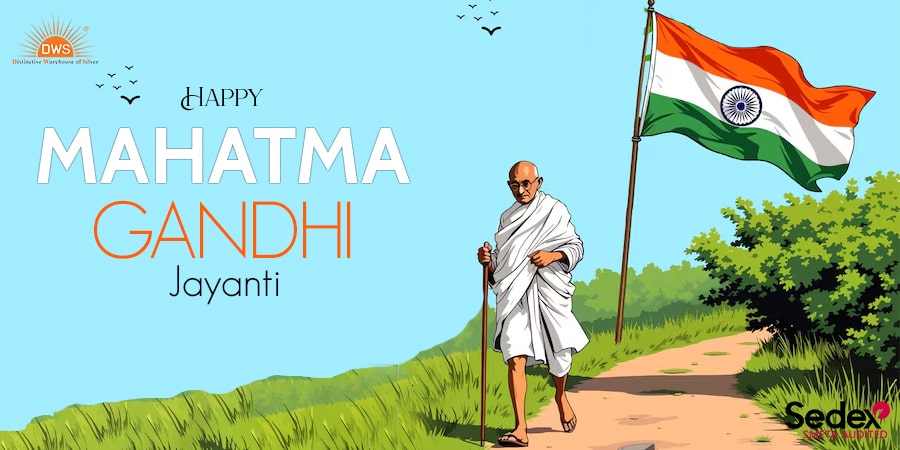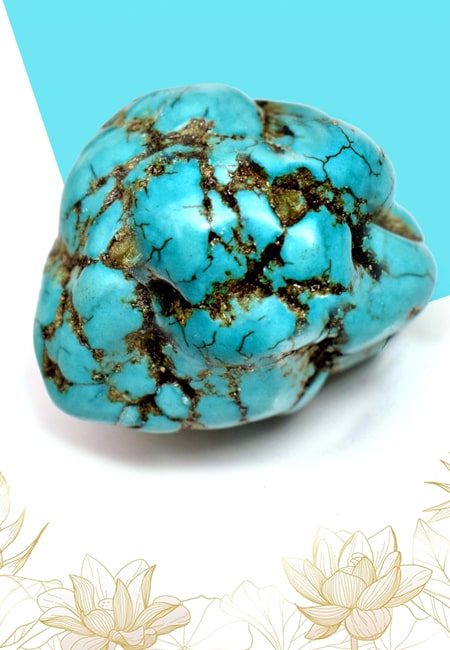- Written By Team DWS
- Festivals
- September 22, 2025
Unveiling the Early Life of Mohandas Karamchand Gandhi: The True Story Behind Gandhi Jayanti
Introduction: Understanding Gandhi Jayanti and Its Resonance
Every year on October 2nd, India transforms with a gentle dignity. Flags flutter, children draw portraits, and people across the globe remember an extraordinary leader, Mahatma Gandhi, whose birthday is observed as Gandhi Jayanti. But behind the public celebrations lies a deeply personal story—a tale shaped by humble beginnings, strong family values, early encounters with inequality, and formative lessons about truth and nonviolence. This is the real story of Mohandas Karamchand Gandhi, from his birth in coastal Porbandar to the years that built the soul who would inspire a nation and the world.

Porbandar: Cradle of the Gandhi Legacy
Mohandas Karamchand Gandhi was born on October 2, 1869, in the small white-washed ancestral house in Porbandar, silent but for the waves of the Arabian Sea and the strains of temple bells in the air. This bustling port town, nestled in Gujarat’s Kathiawad region, had, for generations, been home to what locals called the Bania or merchant class—the Gandhi family among them. Yet, little Mohan’s birth would one day make Porbandar a pilgrimage in the annals of world history.
- Gandhi’s grandfather, Uttamchand Gandhi, was from humble merchant roots but rose to become the Dewan of Porbandar—a role later assumed by Gandhi’s father, Karamchand (“Kaba Gandhi”).
- Karamchand’s reputation for justice, integrity, and administrative skill left a significant mark on the region’s governance.
- The family, deeply revered locally, had created a legacy based on honesty and public service—ideals young Mohandas would absorb from birth.
________________________________________
Family Imprints: Parental Principles and the Child Mohan
Karamchand, Gandhi’s father, was a stern yet deeply loving figure—known for his forthright honesty and bracing temper. Yet, his mother, Putlibai, perhaps left the deepest imprint on Mohandas’ soul. Putlibai, Karamchand Gandhi’s fourth wife, was a gentle pillar of strength, wisdom, piety, and restraint. Her devotion, particularly influenced by Jain precepts of compassion, nonviolence, fasting, and prayer, would shape Gandhi’s earliest beliefs.
- The family structure was close-knit, with strong bonds among siblings and an atmosphere rich in moral instruction.
- Putlibai’s daily rituals, her devotion, and unwavering adherence to simple, principled living became the bedrock of young Mohandas’ consciousness.
- “Moniya,” as he was called at home, was the beloved youngest, the favorite of the family.
Life in the Gandhi household was defined by stoic routines, prayer sessions, and discussions on tradition and right conduct. The young boy was especially aware of his own place—eager to please but also quick to question, especially matters of custom or faith.
________________________________________
Childhood in Porbandar and Rajkot: First Lessons of Heart
Mohandas’ earliest memories were of the crowded lanes of Porbandar and, after Karamchand relocated for government work, the polished palace corridors of Rajkot. The provincial shift brought new friends and fresh lessons. At school, young Gandhi was timid and reserved—studious, eager to escape home for games, yet always returning for meals and comfort.
- His favorite companion was not another high-caste child, but Uka, a sweeper-boy considered “untouchable.”
- When Mohandas shared his sweets with Uka, his mother protested, citing Hindu customs forbidding such intermingling.
- The boy’s response: “Why not, mother? I find nothing wrong in touching Uka,” marked an early rebellion against social prejudice.
Books and solitary walks fascinated Mohandas more than social chatter. He devoured tales of ancient heroes and piety: Shravana’s devotion to blind parents, and the drama of King Harishchandra’s unbending honesty, igniting in him a lifelong quest for truth and filial duty.
________________________________________
Early Education and Shaping Ideas
Mohandas attended primary school in Porbandar, then Rajkot, excelling in geometry because it required logic, not rote memorization. He was diligent if unremarkable—a trait that would later make his intellectual evolution so relatable to millions.
- His teachers, recognizing his sincerity and curiosity, fostered a sense of purpose.
- Exposure to arithmetic, geography, and language broadened his worldview.
- Home’s discipline, combined with school learning, gave Gandhi a balance of structure and independent thought.
________________________________________
Teenage Years: Trials of Growth and the Young Bridegroom
Adolescence was turbulent, marked by the excitement and burdens of a traditional society. At thirteen, Mohandas was married to Kasturba (“Ba”) Makhanji in a week-long celebration—an event that was both thrilling and bewildering. The marriage, arranged by the families, was emblematic of Indian customs, yet would blossom into a partnership that supported Gandhi through trials for decades.
- Gandhi’s feisty attempts to teach his bride reading and writing were overshadowed by Kasturba’s natural domestic wisdom and resilience.
- Youthful dalliances such as smoking and experimenting with meat—egged on by a friend with a “bad reputation,” Sheikh Mehtab—created moral turbulence for Mohandas.
Most powerfully, a period of teenage turmoil led him to steal a small piece of gold to pay a brother’s debt—a crime which wracked him with guilt. His tearful confession to his ailing father and the silent, forgiving reaction he received planted in Gandhi the roots of his relentless dedication to truth and repentance.
________________________________________
The Impact of Early Personal Loss
Gandhi’s father, Karamchand, died when Mohandas was just sixteen. The loss left the young boy devastated, altering family dynamics and thrusting greater responsibilities upon him. The moment strengthened his bond with his mother—deepening his appreciation for sacrifice and resilience.
________________________________________
Journey Beyond: Education and the London Sojourn
After high school in Rajkot and a short, hesitant spell at Samaldas College in Bhavnagar, Mohandas resolved—at family urging and with the encouragement of family friend Mavji Dave—to pursue legal studies in London at age eighteen.
- His mother’s only condition was that he uphold core Hindu values—abstaining from alcohol, meat, and moral transgression.
- Gandhi’s journey to London brought both promise and challenge—culture shock, loneliness, and the drive to prove himself in an unknown land.
In England, Gandhi enrolled at University College London and trained for the bar at Inner Temple. The city’s intellectual energy expanded his mind: he studied law by day, and at night dove into readings of world scriptures and classic texts.
- Vegetarianism, introduced first as a duty, became a principled choice.
- He joined the Vegetarian Society, debated, and explored Tolstoy, Thoreau, and Ruskin—authors who would later shape his activism and conscience.
________________________________________
Return to India: Professional Hurdles and Forks in the Road
Having obtained his law qualification in 1891, Gandhi returned to India, eager yet unsure of his future. His first professional steps in Bombay and Rajkot were marked by unease—his inability to cross-examine witnesses led to early struggles, self-doubt, and, ultimately, humility.
- During this period, Gandhi married Kasturba anew in spirit, as they shared life’s challenges striving to create a home and raise a family.
- This sense of failure, however, led Gandhi to accept a job offer from an Indian firm in South Africa—a decision that would revolutionize his worldview and impact.
________________________________________
Seeds of Conviction: Early Values and Movements
Long before the Mahatma, the seeds of nonviolence, social equality, and relentless pursuit of truth had been sown by childhood experiences:
- His empathy for the marginalized, especially untouchables, challenged orthodox beliefs.
- Early experiments with diet, honesty, and confession formed the crucible of his discipline.
- Reading, introspection, and frequent self-examination gave Gandhi a depth of spirit unusual for his age.
His wife, Kasturba, emerged as his closest confidant and companion—her simplicity, devotion, and eventual activism becoming an integral pillar of the Mahatma’s journey.
________________________________________
The Significance of Gandhi Jayanti
Gandhi Jayanti is far more than a commemoration of birth. It signals a tribute to childhood’s simplicity, the courage to question, and the strength to rise from humble beginnings. Mohandas’ early life is not merely personal history; it is a template for transformation—for individuals, societies, and nations. On October 2nd, India honors not just the Mahatma, but the little boy, the “Moniya” who learned to share sweets, loved his mother, and believed that every soul is equal.

Conclusion: The Eternal Relevance of Gandhi’s Genesis
Mahatma Gandhi’s impact as a leader, freedom fighter, and global philosopher cannot be isolated from the story of his early years. Everything—the pursuit of Satyagraha, commitment to ahimsa, fight for equity—can be traced back to Porbandar’s warmth, Putlibai’s strength, the lessons of truth and atonement, and the challenges that forged his soul. Gandhi Jayanti asks us to look beyond statues and slogans, and to rediscover not only the Great Soul, but also the small boy who chose kindness, honesty, and unyielding hope.
Popular on Blogs

Black Tourmaline: Meaning, Healing Properties, Fascinating Facts, Powerful Attributes, Versatile Uses, and Beyond
September 05, 2023 / BY Team DWS
Black Tourmaline, also known as Schorl, is a highly revered crystal with incredible metaphysical properties. It derives its name from the Dutch word "turamali," meaning "stone with ..

Carnelian Stone: Meaning, Healing Properties, Power, Facts, Color, Uses and More
December 26, 2023 / BY Team DWS
Carnelian is a vibrant and captivating gemstone that holds a plethora of meanings, healing properties, and powers. Its warm and fiery energy makes it a popular choice among crystal ..

Citrine: Exploring its Meaning, Healing Properties, Fascinating Facts, Powers, Versatile Uses, and Much More
November 18, 2023 / BY Team DWS
Citrine, with its warm golden hues, has captured the attention and imagination of people for centuries. This beautiful gemstone, commonly associated with wealth and prosperity, hol ..

Black Onyx: Unveiling the Meaning, Healing Properties, Fascinating Facts, Powerful Attributes, Versatile Uses, and Beyond
July 25, 2023 / BY Team DWS
Black Onyx, a striking gemstone admired for its deep black hue and elegant appearance, has captivated people for centuries. In this comprehensive guide, we will delve into the mean ..

Unveiling the Mysteries of Turquoise Stone: Exploring its Meaning, Healing Properties, Power, Facts, Color, Uses, and More
December 05, 2023 / BY Team DWS
Turquoise, with its captivating blue-green hue, has been adorning jewelry and artifacts for centuries. This striking stone has a rich history, rich symbolism, and a plethora of int ..

The History Behind The Popularity of Red Agate
December 23, 2022 / BY Team DWS
An Agate is a type of magma rock that takes many years till it is washed out naturally into the water. And that is the reason this stone has elements of water. This beautiful stone ..

Bloodstone: Unveiling the Meaning, Healing Properties, Facts, Powers, Uses, and More
August 21, 2023 / BY Team DWS
Bloodstone, with its captivating deep green color with specks of red, is a mesmerizing gemstone that has fascinated civilizations for centuries. It possesses unique healing propert ..

Plan a Perfect Valentine's Week with Our Valentine Week List 2025
January 22, 2024 / BY Team DWS
Valentine's Day is undoubtedly the most romantic day of the year, but we believe that one day is just not enough to express your love and make your partner feel special. That's why ..


